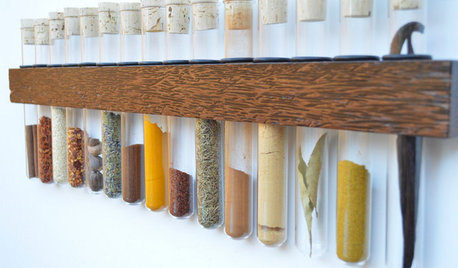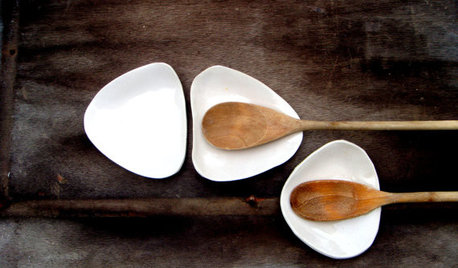Paprika pepper powder
zeedman Zone 5 Wisconsin
17 years ago
Related Stories

SHOP HOUZZShop Houzz: Sweet and Spicy
Cooking is sweeter once you organize your pepper, salt and paprika the stylish way
Full Story0

COLOR11 Colors From the Spice Cabinet
Enrich your home with the luxurious flavors of turmeric, cinnamon, paprika and bay
Full Story
BATHROOM DESIGN7 Striking Paint Colors for Your Powder Room
Whether you opt for a little or a lot, see why the petite bathroom is the perfect place for a fun hue
Full Story
COASTAL STYLETake Rooms on a Coastal Trip With Orange and Blue
Coral and ocean, sunset and sky ... you can evoke a beachy or nautical feel at home with nary a whiff of navy
Full Story
HOUZZ TOURSMy Houzz: A Legacy of Art Lives On in a Texas Home
Family artwork, midcentury furnishings and eclectic style shine in this family’s home
Full Story
PRODUCT PICKSGuest Picks: Soothing Accents of White
Calm your color confusion and set up a restful space with white accessories, artwork and lighting
Full Story
TRADITIONAL HOMESHouzz Tour: An Island Cottage Built of Stone and Steel
A home in Scotland’s Inner Hebrides blends original materials with a new structure to stay in tune with its environment
Full Story
Guest Picks: Sweeten Your Home With Art Evoking Valentine's Day
Get some love in the air with prints that say it with words or put your home in the pink with pictures
Full Story0

COTTAGE STYLEHouzz Tour: Simplicity a Virtue in an English Country Cottage
Muted colors and a mix of old and new transform a 19th-century cottage into a clean and cozy family abode
Full Story
MOST POPULARA Colorful Place to Whiten Whites and Brighten Brights
This modern Minnesota laundry-mudroom gets a smarter layout and a more lively design
Full StorySponsored
Custom Craftsmanship & Construction Solutions in Franklin County



david52 Zone 6
John__ShowMe__USA
Related Discussions
Looking 4 Paprika Peppers, Red dicentra, Trolluis seeds, and more
Q
Drying mixed peppers for hot pepper powder?
Q
What's your favorite pepper to make paprika?
Q
Your favorite pepper(s) for chili powder
Q
gardenlad
ksrogers
zeedman Zone 5 WisconsinOriginal Author
gardenlad
bejay9_10
david52 Zone 6
ksrogers
bejay9_10
gardenlad
ksrogers
bejay9_10
gardenlad
david52 Zone 6
gardenlad
bejay9_10
ksrogers
MLcom
ksrogers